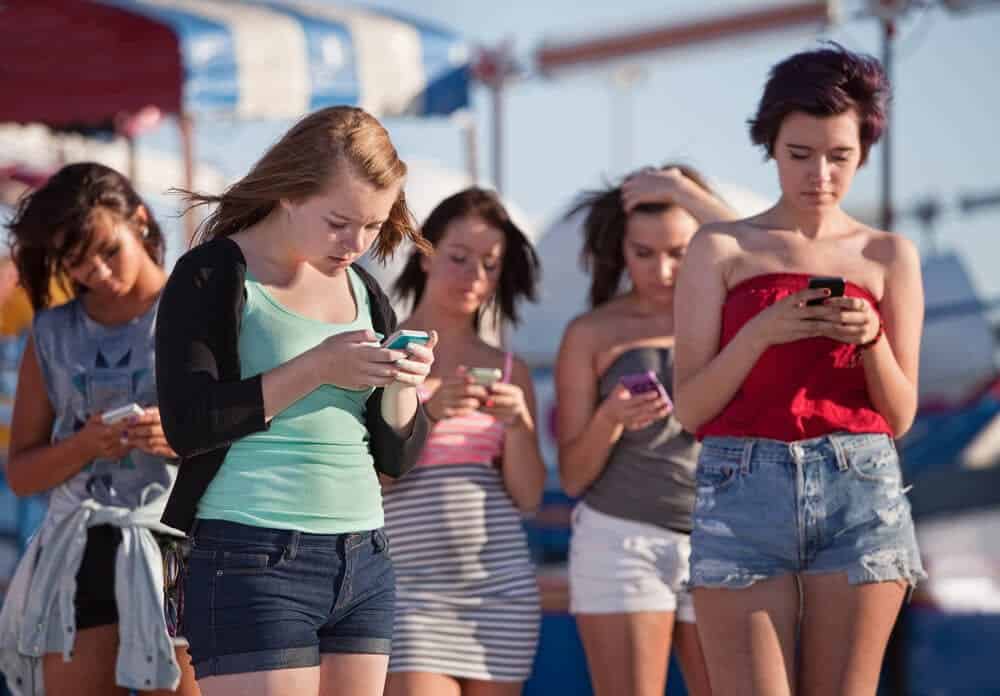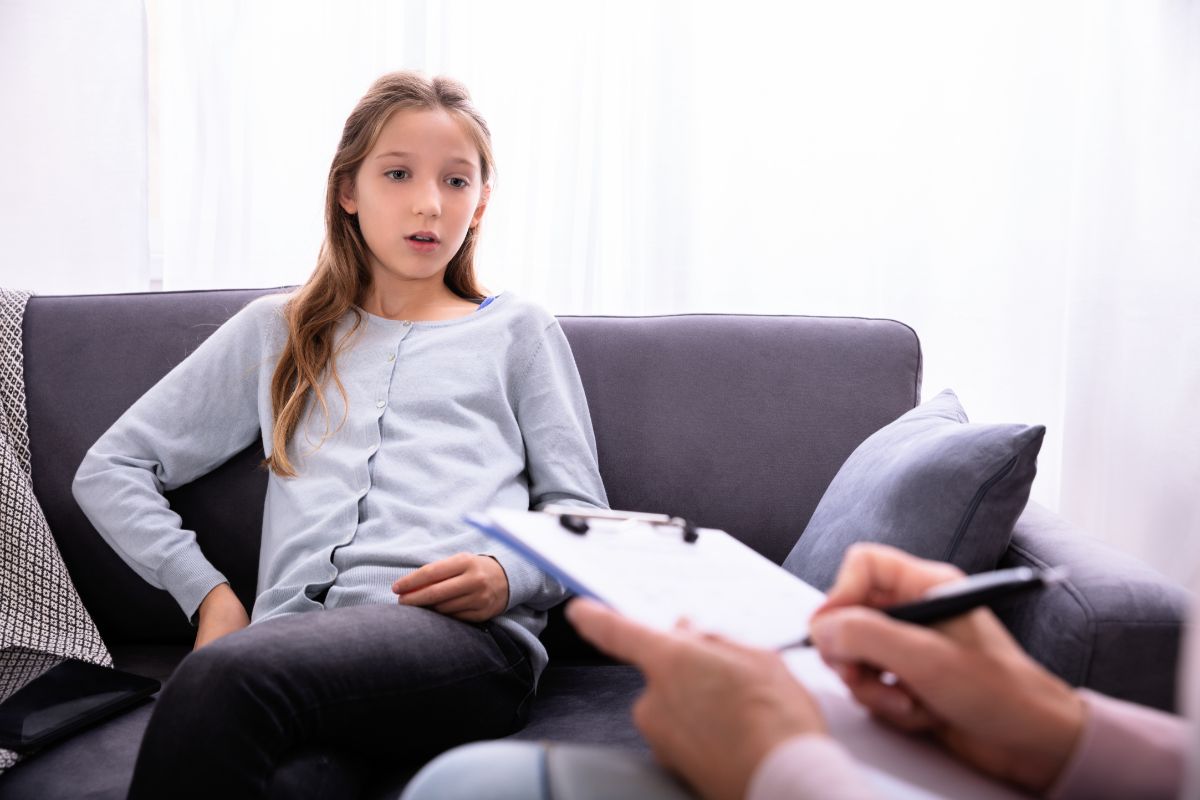
Social Media Use and Disordered Eating in Teens
Being a teenager in this social media driven world has led to a lot of disordered eating among youth. Just as youngsters in decades past were influenced by magazine pin-ups and film and television actors who were too beautiful for words, today’s teens are subject to the unattainable images provided in social media and by social media influencers.
While there are some companies who have recognized the need to use models and actors of more natural sizes (all shapes and sizes, in fact), society is still giving teens the message that thinner is better (the key culprit in disordered eating), blondes have more fun, breast implants and Botox are necessary evils, and using steroids to boost your muscles is essential for success.
Of course, none of this is true. Teens are easily led by their immature brains that lack proper reasoning skills. The overwhelming images in the media, combined with intense peer pressure, negative self-talk, and the desire to be popular, can lead to all kinds of risky behavior – including disordered eating.
Definition of Disordered Eating
Disordered eating is when a person eats in a way that negatively affects his or her overall health and mental health. Disordered eating can include behaviors that reflect the symptoms of eating disorders such as bulimia nervosa, anorexia nervosa, binge eating, or other specified feeding and eating disorders known as OSFED.
Dieting is one of the most common indicators of a teen who is developing an eating disorder. Disordered eating has been linked to the inability to cope with stress, as well as increased symptoms of anxiety or other mental health issues in teens. Overeating or not eating enough are the first, most obvious signs of disordered eating. Severely restricting the amount of food eaten is very dangerous, which teens don’t always understand. When the body is in starvation mode, it responds by reducing the metabolic rate; this can lead to binge eating or overeating, and, therefore, weight gain and obesity.
Teens who engage in disordered eating often feel guilt and failure. Teens can experience these feelings as a result of binge eating, ‘cheating’ on a diet, or gaining weight. A person with disordered eating may isolate themselves to avoid eating in public or even with friends. This can lead to low self-esteem and lots of stress and anxiety.
Here are some examples of disordered eating behaviors:
- Fasting or chronic restrained eating
- Using diet pills
- Skipping meals
- Restrictive dieting
- Binge eating
- Self-induced vomiting
- Laxative, diuretic, enema misuse
- Unbalanced eating (e.g. restricting a major food group such as ‘fatty’ foods or carbohydrates)
- Steroid and creatine use to enhance physical appearance
All of these are methods used by teens who engage in disordered eating. Will every teen use every method? Not necessarily. But if you notice your teen engaging in these behaviors or obsessively discussing diets, weight loss, or appearance, talk with him or her immediately to get to the root of the behavior.
Teens who suffer from disordered eating patterns either minimize or do not understand the impact it has on their overall health. This could lead teens to do severe damage to their bodies. Health consequences include a greater risk of obesity and eating disorders, gastrointestinal disturbances, bone loss, electrolyte and fluid imbalances, low blood pressure and heart rate, and higher rates of anxiety, depression, and social isolation.
It’s important to get any teen showing signs of disordered eating into a session with a nutritionist. Registered dietitian nutritionists are vital to the treatment of disordered eating. Often, teens working with dietitians are unaware that their eating patterns are harmful. Working with a nutritionist who has experience counseling teens with eating disorders is essential in treating disordered eating to prevent it from developing into a full-blown eating disorder.
The Unattainable Image
Media is something we cannot escape from – and neither can out teens. They are growing up at a time with a heavy focus on advertising and media, and it’s difficult for them not to compare themselves to the images of the media and social media ideals. “In fashion magazines, the body types shown are that of large, muscular men and tiny, waif like women.”
We have all come to know that ‘branding’ is essential to social media marketing, but there is a different, more dangerous type of branding out there called body branding. In this practice, teens take to heart the advertisements they see around them, internalizing society’s model representations of ‘ideal’ body types. For young men, images of beefed up male models and bodybuilders are everywhere. For girls, it’s essentially the opposite.
Teen girls strive to be as tiny as possible – no matter the cost. This is a tragic consequence of the unhealthy images teens are bombarded with – the media overload – of a society that places far too much importance on looks. As such, young boys and girls work relentlessly to attain the body standards set by society and social media.
Nowhere is this disconnect more apparent than in the film industry. The media shows unrealistic images through their actors in movies. The actors that have to bulk up or slim down for a role spend hours in gym every day of the week. They spend most of their day lifting weights or doing cardio.
Most people don’t have time to spend hours at the gym focusing on physical appearance. These actors also have support teams that include professional chefs, nutritionists, trainers, and others who keep them focused on attaining the perfect body for their upcoming role.
Once actors have achieved their “perfect look” for the role, social media wastes no time spreading marketing materials about the upcoming film that includes photo after photo of the actors in full costume, make-up, and a photoshopped, blemish-free image. Most teens are pretty savvy about photoshopping and how to look really good on camera; but, they seem to forget that when they are in pursuit of the perfect body.
Another thing teens don’t realize is that once a film has been shot, the actors stopped their regimented activities and go back to eating what they want and working out only as much as is necessary to maintain a certain, general look.
One example is Chris Hemsworth: “Chris Hemsworth, who plays Thor, has a built body that he maintains between movies, but when they start filming again, he takes things to another level to prepare for the role.”
It is clear that society, through all forms of media, has created both male and female images that are unattainable for the average person. Teens, whose bodies are still growing and adjusting chemically, are physically incapable of generating bodies like those shown in the media. But, teens will resort to disordered eating to try and achieve that very goal.
Social Media Influence
There is no question that social media has its place. It can help friends stay connected and help new friends get acquainted. It brings old friends back together and helps parents connect with their kids. But, there is always a downside to everything.
Researchers have found that the relentless overstimulation of social media shifts the nervous system into fight-or-flight mode. This makes disorders like teen depression, oppositional defiant disorder, and teen anxiety worse. In fact, when teens try to deal with those intense feelings, they might cope with disordered eating. And disordered eating is a mental health condition, not a physical one.
Studies show that the frequency of a teen’s time on social media includes a clear relationship to their mental wellbeing. For illustration, 14- to 17-year-olds who utilized social media at least seven hours every day were more than twice as likely to be diagnosed with depression, treated by a mental health specialist, or taken regular medicine for a mental or behavioral issue amid the final year.
It is clear that overexposure to social media undercuts teen mental health through what is called social comparison. Teens spend much of their time on social media watching the lives and seeing selfies from their peers, celebrities, and social media influencers. This leads to non-stop comparisons that can damage a teen’s self-esteem and body image.
With social comparison, teens report lower self-esteem and self-evaluation “when looking at peers on Facebook and other social media sites. For example, this includes looking at profiles on which peers post about their healthy habits, fun social events, or accomplishments.” This can lead teens to try to make themselves feel better by making so-called “downward comparisons”—viewing profiles of people with fewer friends and lives that are “worse” than theirs.
Social media also is unfortunately a forum where teens can promote harmful and risky behaviors. As such, teens with disordered eating can connect with others on different social media platforms in order to compare their self-destructive behaviors. Teens can share their obsessions with calorie counting, fasting, laxative use, or starvation methods. This can help teens learn ways to conceal or boost the disordered eating behavior, putting them at higher risk for continued disordered eating.

The Link
Because social media is constantly used to share virtually everything, it has become a key tool for influencing others. It also has the undesired effect of placing too much value on the perfect body image.
Here is a list of several ways social media negatively affects body image:
Objectification: Images on social media, most of which are modified in editing programs or via filters, play a role in how a teen seeks validation, often finding worth by how many “likes” and comments they receive. The popularity of selfies on social media can potentially send a message that our beauty determines our worth and our body, a message that many people struggling with disordered eating fight against on the regular.
Comparison: Social media lends itself naturally toward comparison, as we tend to judge ourselves against the successes and happiness of others. For someone in the depths of disordered eating, this can be toxic as they compare their body image to those seen on social media. These images are often altered and show an unrealistic picture of how someone looks.
Triggers: For those who are struggling with disordered eating, social media contains triggers to engage in eating disordered behaviors. Posts about weight loss, workout routines, dieting, and the images of unrealistic ideals of body sizes can trigger someone with disordered eating.
It is essential that teens with disordered eating be mindful and aware of the nature of social media, and understand the nature of images online. Nearly all images of perfect hair, make-up, six-pack abs, and body types are altered or enhanced in some manner.
It’s also important for teens to understand that the people posting these images may in fact have disordered eating problems of their own. Young people see thousands of enhanced images on social media every day and use them as personal goals.
Social media creates this desperate desire in teens to fit into the body image that society says is perfect. Teens need to learn how to be discerning about who they follow. While there is nothing wrong with taking a few make-up tips from an influencer or following advice from a social media nutritionist (after checking their credentials), teens tend to simply believe what they see and read. This inability to discern is what can lead to a desire for the “perfect” body and then, disordered eating in an attempt to achieve that goal.
Conclusion
Social media can be an amazing tool for many purposes. However, its pervasiveness, and invasiveness, can lead teens to start a regimen of disordered eating. The unrealistic images posted by friends, celebrities, and influencers give teens the impression that success is only attainable with the “perfect” body. Teens are desperate to fit in; if that means succumbing to disordered eating to achieve the desired image, they will not hesitate to try it.
The medical professionals at Beachside Treatment Center will not only help your teen to cope with their disordered eating, but will also identify and diagnose the underlying reasons of the disorder and help them break free from social media if that is one of their triggers. Get your teen the help that they need today!




